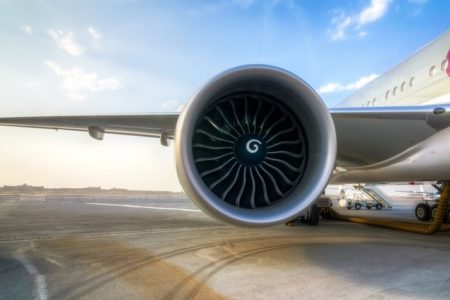December 30, 2019 – This year the aviation and aerospace industries faced a number of challenges.
Among them was the Boeing 737 Max 8 grounding after two accidents which killed 189 and 157 respectively. Boeing tried to blame pilot error until it was revealed that the redesign of the 737 airframe to accommodate larger, more fuel-efficient engines changed the airplane’s aerodynamics requiring compensating automatic pilot software called MCAS, for which human pilots were never trained.
Then there was environmental activist pressure on the aviation industry to accelerate decarbonization.
Among new technologies being introduced was the first electric-powered commercial aircraft.
While passenger volumes continued to increase with more commercial aircraft in the air than at any time in the past, accountability and sustainability concerns became part of the conversation in the boardrooms of avionics and airline companies.
Aerial taxis and in and intercity autonomous air vehicles appeared in trials of an entirely new type of air passenger service.
Drones continued to make aviators nervous as these tiny airborne robots grew in numbers explosively.
Commercial supersonic air travel was once again in the headlines with NASA promising a silent successor to the ill-fated Concorde sometime in 2021. No more sonic booms meant these aircraft could fly over land without restriction.
Scramjet hypersonic transport was in the planning stages with companies like Airbus working on prototypes.
Sabre, Reaction Engines hybrid hydrogen-air rocket plane moved one step closer to becoming the first powered space plane to fly both in the atmosphere and space using a combination air-breathing jet and rocket engine.
And in the regulatory environment, significant problems emerged in light of the two Max 8 crashes and what rot was exposed subsequently in the fallout at the U.S. Federal Aviation Administration (FAA). In what in hindsight is seen as a mistake, the FAA had given Boeing a larger role in overseeing the safety of its aircraft, passing along its own engineering reports to the regulatory body which then provided a rubber stamp. Many countries’ aviation authorities took FAA recommendations in good faith. A big mistake!
On the military side of avionics, the rise in autonomous aircraft represented the early evolution of robotics replacing human fighter pilots.
Rather than confined to speculation and science fiction, weaponized drone swarms came closer to becoming a reality in 2019.
New fighter jet models revealed and in planning stages from the United States, Europe, Japan, and China featured more autonomy, more firepower, and more stealth.
Russia introduced a hypersonic weapon designed to evade any existing anti-ballistic missile system, potentially ushering in a new space arms race.
The United States launched its new military arm, the Space Force, increasing the likelihood that the United Nations’ conventions agreed to by most nations on the planet about the peaceful use of outer space would soon end.
And in the world of commercial rockets and satellites, a burgeoning industry continued to reveal that national space programs were overpriced and under deliverers when it came to getting satellites aloft.
The NASA commercial space crew program continued to lag behind the timetable originally established to put Americans into low-Earth orbit and on the International Space Station. Instead, NASA continued to purchase seats on Soyuz rockets and capsules, a technology some 5o-years old and showing signs of aging with a near disaster in one launch.
And junk continued to fill near-Earth space with no solution to begin the cleanup available until the mid-2020s. How bad has the space junk problem become? Several times in 2019, the International Space Station needed to move its orbit to avoid collision with pieces of debris from past missions and moribund satellites still circling the planet.









